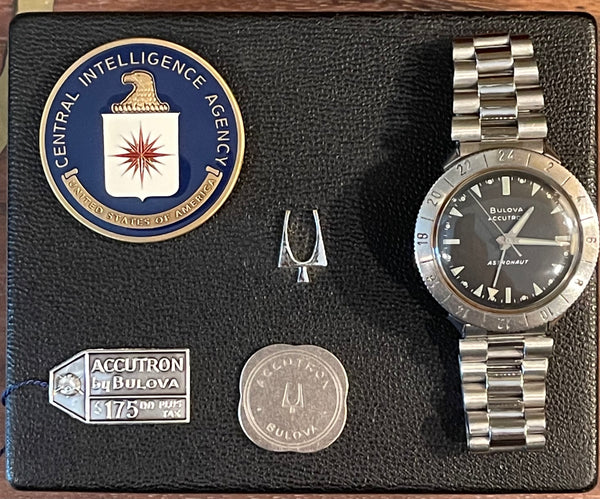In 1957 Clarence “Kelly” Johnson, the leader of aircraft manufacturer Lockheed’s Advanced Development program dubbed Skunk Works, knew satellites would make reconnaissance aircraft obsolete in the near future. It was determined that the U-2 spy plane, which Johnson had worked on, had a radar cross section that was simply too large to operate completely undetected. Three years later one flown by pilot Gary Powers would be shot down in Soviet Airspace and he would be captured and charged with espionage. The price of human life was simply too high to pay, and with the Cold War in full swing, US intelligence-gathering operations were necessary to keep an edge over the nuclear-capable Soviets. This meant that significant investments were being made in satellite technology to solve these problems, but the technology wasn’t quite where it needed to be just yet. That day would come, but the impending obsolescence of aircraft built for reconnaissance didn’t stop Johnson from spearheading one last effort: Project Oxcart.
Richard Bissell was the CIA officer responsible for facilitating the successor to the U-2. He oversaw Project Gusto, which was a committee set up to explore all possible solutions to the dynamic need for a next-generation aerial reconnaissance platform. Lockheed’s submission won out over Convair’s designs derived from the B-58 Hustler, and the A-12 project was funded and kicked off.

The A-12 had its maiden flight on April 25th, 1962, and subsequently carried out 2,850 test flights before its first official mission on May 31st, 1967. Ironically, the A-12 never carried out any overflights of the Soviet Union or Cuba, which is exactly what it was intended for. The CIA found another use for the plane: to spy on North Vietnam. Departing from Kadena Air Base in Japan, the A-12 performed 22 sorties gathering intelligence on the movements of North Vietnamese forces.
The project wasn’t all for naught, however. The development of the A-12 led to the creation of the SR-71, the often-celebrated and easily recognizable icon that’s wrongly dubbed “the fastest airplane ever to have graced our skies” even though that honor officially belongs to the A-12 at just over Mach 3.3. While the A-12 was born and died in secrecy being owned and operated by the CIA, the SR-71 was the product of the USAF. Both carried out surveillance overflights, but the SR-71 was fit for a wider range of missions, not to mention a two-seat configuration for a reconnaissance officer. The plane featured a modular system in the nose-mounted equipment bay that allowed for ELINT and SLR data to be collected. ELINT is electronic intelligence, while SLR is side-looking radar, and the added benefit of gathering additional intelligence meant that the SR-71 had a much longer service life and participated in just about every single conflict up until 1989, until they were retired.

The A-12 on display at CIA Headquarters — number eight in production of the 15 A-12s built — was the first of the operational fleet to be certified for Mach 3. No piloted operational jet aircraft has ever flown faster or higher. (Photo Credit: CIA)
And that’s why it has become perhaps the most prominent military aircraft ever produced. It’s become a symbol for superlative, next-generation technology and a very specific can-do attitude of the mid-century era that simply doesn’t exist anymore. Budgets be damned, the Blackbird was going to be the most capable airplane ever. And it was. It’s a flying superlative.
However, the watch that’s most typically associated with the A-12 is anything but iconic, instead it’s been relegated to enjoyment by a very niche community of die-hards. Although what it lacks in popularity it more than makes up for in technical prowess. The Bulova Astronaut was a perfect horological fit for the A-12; both platforms were so far ahead of their time that neither of the core technologies they introduced stuck around long after they were gone. The Astronaut used the Accutron tuning fork movement, which predated quartz and proved to be accurate to one second a month. It didn’t have a balance assembly (or mainspring), instead it used a tuning fork oscillator that vibrated at 360hz. If we think in terms of a “propulsion system,” the tuning fork movement was congruent to the SR-71’s J58 engine that pioneered a system that essentially turned it from a standard jet engine at lower speed to a ramjet engine above Mach 2.

Bulova Accutron Astronaut, late 1960s (W.O.E.s Personal Collection)
Both the tuning fork mechanism and the J58 were engineering marvels that excelled at capturing and controlling energy and bending it to humankind’s will. The Bulova Accutron Astronaut even emits a high-pitch whine that’s straight out of a sci-fi movie.
The advantage of the tuning fork movement for an A-12 pilot is that there isn’t a balance spring that G forces would be able to affect, and in an airplane that can go over Mach 3, G forces are a crucial concern for a mechanical watch. Accutron movements proved effective and reliable for most of NASA’s cockpit instrumentation in the Gemini rockets, and later, the Apollo program. The CIA supplied the A-12 pilots with the Bulova and when the program ended, the watches stayed with the pilots.

Vintage Watch Advertisement, 1969 (W.O.E.s Personal Collection)
In typical CIA fashion, the Agency cared nothing about the absolute technical and engineering achievement of both the A-12 and the Bulova Astronaut. They were tools to get the mission done. If there was a cheaper or more effective tool available to execute the mission, those would be chosen, and eventually, they were. Quartz watches replaced the tuning fork movement, and more conventional propulsion systems were favored over the complex retracting inlet cone system that allowed Mach 3+ flight on the Blackbird.
The existence and disappearance of both these technical marvels serves as a reminder that no matter how much we romanticize or idolize incredible technology, it’s all in service of a larger mission: Giving America a competitive advantage when it comes to national security. The rest is just an added bonus.
Read Next: Man O'War And The Horological Symbols That Inspire Us








3 comments
Regarding your comment “more conventional propulsion systems were favored over the complex retracting inlet cone system that allowed Mach 3+ flight on the Blackbird,” no conventional propulsion system could provide the velocities obtained by the Blackbird, which was cancelled due to politics and jealousy from generals in the fighter community.
Forstener have a homage version of the Bulova Astronaut know as the Forstener A12 quartz GMT
It has no seconds hand and has the bullet style bracelet.
A few facts need to be mentioned:
The A-12 may have flown faster than the SR-71, but both airplanes’ engines were heat-limited to 427 Centigrade, and it is known that the SR-71 flew as fast as Mach 3.5 on occasion and was not limited to Mach 3.3. The Accutron Astronaut watch was accurate to two seconds per day, not one second per month.